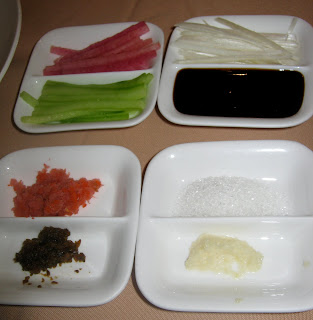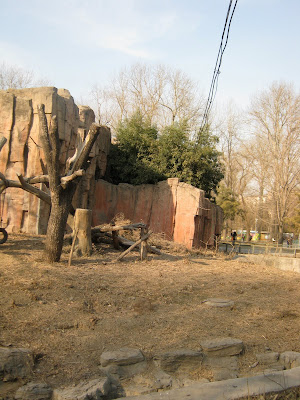Ooooohhhhh, Posh aren't we. You get to have a driver.
When we let friends know we would be traveling to Beijing, it turns there were connections there. And for the small price of transporting a few books of music, I would have a chance to get driven somewhere by somebody's personal driver.
Back here in the good ol' US of A, we all figure that if one owns a car, one would drive it. There are a few exceptions of course, but the idea of having a driver is strange enough that we feel it deserves a movie/play as an oddity.
Elsewhere, driving is less, um, burdened with regulation. The streets are less burdened with signs, lane markers and static configurations. Also the variety of vehicles may be broader than we are used to. In Beijing, all of this is true, along with a viscous dimension-tearing mix of highways we would recognize jammed in, over, through and around the above mentioned street system.
It turns out that many who live in Beijing, and other similarly (un)drivable cities feel the same. Coincidentally there is often a raging wealth gap between those who have and thus have cars, and those that have not, so might as well get a job being a driver.
Along with the craziness in driving, many of these cities (Beijing included) have next to nowhere to park, so a driver is essential. He (without exception as far as I have EVER seen) stays with the car when parking it in essentially a No Parking Zone, or may take the vehicle and park it quite a distance away, showing up at a predetermined time, or at the beckoning of a phone call. Yes, these days all drivers have cell phones. This turned out to be good for me.
What this all means, is that while I might get behind the wheel of a car in some foreign countries (Canada, Australia or maybe outside major cities in most of Europe), I do not have what it takes to brave the mean streets - and really don't have it when it when the most common sign in the back streets is "No horn honking!"
Earlier in the trip, I had been pondering how in the world to get to MaLianDao - the Tea Market (or Tea City) in Beijing. It was a long way from our hotel - almost diagonally across the whole sprawl, and no subway went anywhere near it. I was leery of taking a taxi that far, since I am basically helpless in any dialect of Chinese, but when the offer of borrowing a driver for part of a day came up - this seemed my chance! (Having done this once, I'll be braver when I don't have pneumonia)
The driver seemed to understand what I wanted (it helped having the name of MaLianDao in characters, and a bi-lingual map), but he still called someone who spoke quite excellent English to make sure everybody did understand everybody.* So we had the Driver until 11.
I was right about the Tea Market being at the other end of the world. And the fact that Beijing is a city of ring roads made it even further. (Yup, no freeways through the center, where the Palace lies). So it took us ages to get there. Tavin took some interesting pictures of the sights, from the back seat, along the way.





But we made it! And there was the statue of Lu Yu. I'd run into this Sage of Tea in Bridge of Birds, and found him a fascinating idea. But, I'd never given him much serious thought, nor wondered particularly hard if there really was a Sage of Tea. Turns out there is, he really is Lu Yu, and I got to see his statue at the tea market. Awesome.





But we made it! And there was the statue of Lu Yu. I'd run into this Sage of Tea in Bridge of Birds, and found him a fascinating idea. But, I'd never given him much serious thought, nor wondered particularly hard if there really was a Sage of Tea. Turns out there is, he really is Lu Yu, and I got to see his statue at the tea market. Awesome.
Sadly I only had a tiny bit of time. I was in the cave of wonders with a ticking clock. Even if I'd had all the time in the world, I would have been largely faking it anyway, so I just followed my nose. It took me to a tea shop that was a space in the hall basically outlined by the packing cases of their wares as the walls, with tables and all accoutrements to taste and enjoy the tea, and containers and vacuum packers to help you take home your tea in the best possible shape.
Mine did make it home is fabulous shape. And thanks to a gift of a tea pot at a different point in the trip I have vessels worthy of this grand libation.
I made the most of my 20 minutes (OK it turned into a few more), and sampled a nice handful of teas. I knew I was missing SO much, but I had a Jasmine tea that was nothing like anything I had ever had before. An oolong that was a revelation, and a disc of the fabled Pu'Er tea. If I'm ever in Beijing again, I'll find myself a great tea guide and do that again, over several days if I can.
Next - Are you sure you just remodeled? The Science Museum.
* I have been told in Korea, this is actually a service offered by their taxis. The driver will call a number on his cell phone and a three way, bilingual conversation will ensue to make sure everyone knows what is going on.















































